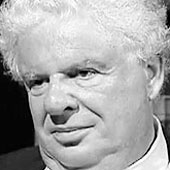Dublin Swings
After several remarkable years of economic growth, is Dublin the same old city it used to be?
March 7, 2005
Michael Collins and Leopold Bloom would not recognize 21st century Dublin — but they’d still love it.
Bloom, the legendary hero of James Joyce’s masterpiece “Ulysses,” would certainly have been at a loss in his old haunt of Davie Byrne’s pub on Duke Street.
It would have stunned him that he could have paid for his still excellent and unsurpassed pint of Guinness stout there by Visa card.
And Collins, the legendary guerrilla leader of Ireland’s War of Independence, might have had difficulty in adjusting to the fact that a fashionable Italian restaurant now occupies the premises in which he defied the British Army, a stone’s throw away from Dublin Castle, for untold centuries the stronghold of British rule in Ireland.
Boldly striding into the 21st century, Dublin has a swagger to her step — and a bold cosmopolitan glow around her.
It is no longer my father’s city or that of my Uncles Willy and Natey. And it is no longer the city of the witty and charismatic undeserving poor celebrated by George Bernard Shaw, who for so long entertained and held court in dusty pubs throughout endless sharp winters afternoons.
These days, finding a quiet pub in central Dublin where the roar of the muzak will not scramble your brains is an achievement akin to dividing the Red Sea.
Everything is changed, changed utterly, as William Butler Yeats wrote of the 1916 Easter Rising. Dorset Street today is no longer the seething mass of humanity trying to keep afloat amid an ocean of poverty and endemic tuberculosis to shock even the denizens of New York’s Lower East Side.
The area now plays host to thriving little retail establishments — and wheeling and dealing Russians predominate.
Sean O’Casey and Mary Lavin, who immortalized the horrors endured by the poor, would be convinced they were on another planet.
Even the characters in Roddy Doyle’s delightful Barrytown tales of only a couple of decades ago would not recognize the place. Instead of big, red-haired conductors, many of the bus drivers are now Hindu Indians. But they’re Irish — and proud of it — too.
Ireland has seen a decade and more of sustained economic growth rates to rival those of China. On top of that, the growth was coupled with the vast cosmopolitan influx that followed the collapse of communism and the 10-nation expansion of the European Union that transformed Dublin.
Bright young Russian and Ukrainian women staff O’Briens’ stylish sandwich shops. And they, like the Hindu bus drivers, are already picking up the classic, taunting Dublin accent or brogue.
Ireland’s ancient capital may have become a proud, prosperous and confident weltstadt, a world city to rank alongside any in the 25-nation European Union.
And the euro may have painlessly and easily displaced the punt as the national currency, but the transformation has been a gentle, not a wrenching one. And in typically Irish fashion, the great past has been preserved.
Gone is Bewley’s Oriental Cafe — that genteel haven redolent of pretension to respectability that drew my father like a magnet and was a refuge to my uncles through half a century. It finally fell victim to the soaring rents and central city property boom.
But Messrs. Maguire bar and microbrewery is still a haven of early 20th century Dublin style looking out across the river.
And Kennedy’s Pub off Fenian Street just around the corner from Merrion Square will still let the unfashionable, undeserving poor and the passionate young solve all the problems of the world over a leisurely pint or two without drowning them out in a tidal wave of hip-hop or rap.
Nor have Ireland’s urban planners let the city be pulverized and crucified by mindless networks of obscene freeways as has been the Robert Moses-inspired fate of most of America’s cities.
There is hardly even a high rise in sight. The city is still awash in the great Augustan architecture of the 18th century that for so long has been its greatest glory.
All the atmospheric little antiquarian bookshops that used to crowd Wellington Quay on the south side of the Liffey are all long gone now. Packed Internet cafes have taken their place — and Russian, not Gaelic, is the second language of choice.
But though much has been taken, much remains: Striding along Burgh Quay in the wee hours of the after-midnight, when even the pubs of Temple Bar have shut up shop, I feel the quick, proud, brisk steps of three old friends at my side.
It is the spirits of my dad and my uncles, still at home in the great city they loved so much.
Read previous
The Water Century
March 4, 2005
